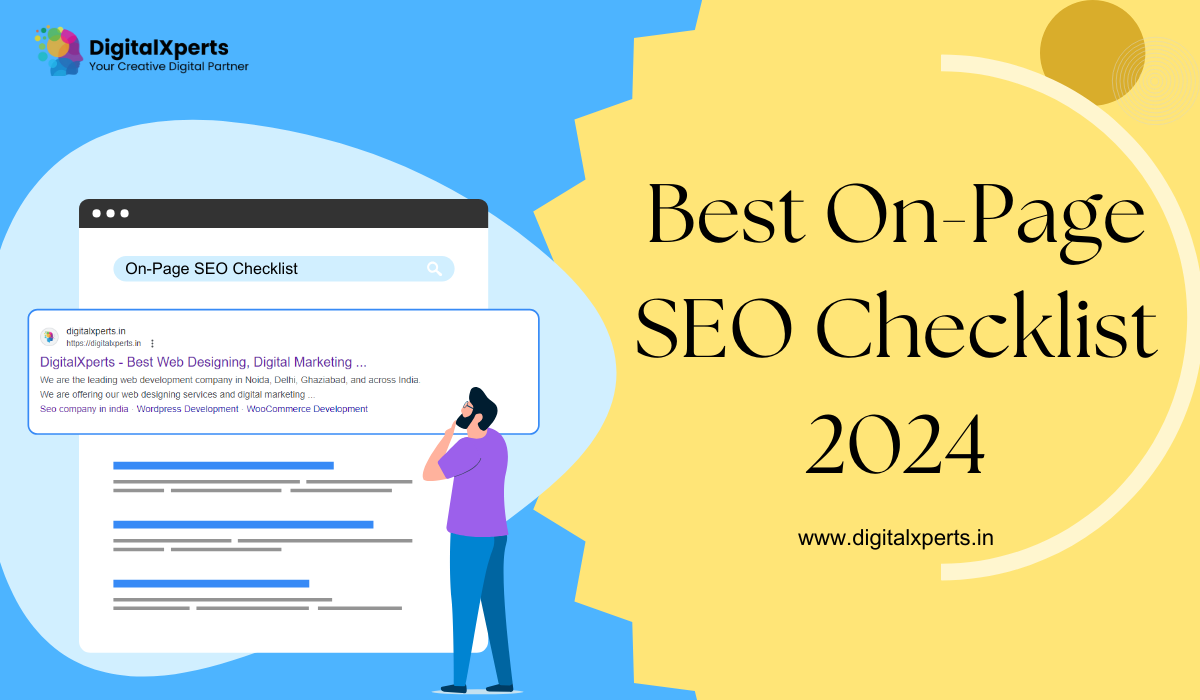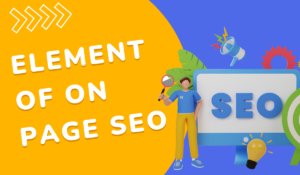
Introduction
On-page SEO Checklist can be defined as a strategy that can help bring many visitors and buyers to the website. This aspect of SEO is entirely under your control: You still decide which topic and what goals each page should have, to whom the information is directed, and what keywords and phrases are key to it. We have also provided you with an on-page SEO checklist to guide you in the simplest and easiest ways.
What is On-Page SEO?
On-page search engine optimization or on-site search engine optimization refers to the process of ensuring that elements within your website are well optimized to help obtain a higher rank in the various search engine results so that more traffic can be generated to your site. Such components are content site-map and HTML coding are some of the aspects of a website. Google’s algorithm considers three main factors for ranking websites: There is an On-page SEO Checklist that relates to link building, off-page SEO, and technical SEO.
On-page SEO: This specialization deals with the aspects of your website that are searchable by web crawlers.
Off-page SEO: External functionality in terms of sharing content and linking to sites from outside the domain.
Technical SEO: Points to everything that was not mentioned earlier – such things as structured data, site speed, and optimization for mobile devices.
What is On-Page Search Engine Optimization and why is it important?
On-page SEO is important for several reasons and Those are informing search engines about your Website and the benefits the Website offers to the visitor. It assists in enhancing the usability of your site with improved facilities for the users as well as for the search engine bots. The development and launching of the website are but a bare minimum; the task of optimization of the site for rank and traffic that follows is the real work.
Elements of On-Page SEO

On-page optimization can be further divided into Content/marking elements, HTML elements, and site elements components. Here’s a breakdown:
Content Elements
Keyword Research: Competitors should be dangerous and the terms should be analyzed to identify the keywords and topics used in the advertising. Websites such as Ahrefs, AnswerthePublic, SE Ranking, UberSuggest, and so on can assist with this. Ideally, potential keywords should point to that stage of the buying cycle that the buyer is in at any particular time to reflect the search intent of a buyer.
Visual Content: It is pointed out that the use of images, graphics, and charts makes it more appealing and easier to make logical connections. This is done with the use of alt tags on the images to attract traffic from users who are using images to search for specific items.
HTML Elements
Page Titles: Informational: Place the focus keyword in the title naturally, so that the visitor and search engine understand the topic of the given page.
Headers: At least use the <h1>, <h2>, <h3>, etc. headings to make content easy to read through and relevant to the user.
Meta Descriptions: Meta descriptions do not have a direct impact on website ranking but play a significant role in the click-through rate. It’s important to write highly engaging summaries that can be accommodated within the 160 characters tallying the Twitter space.
Image Alt-Text: Searching via images – this will help search engines to better understand your images and increase your chances for the image search.
Structured Markup: Facilitating screen eye readers to comprehend content aspects and can enhance how your content is displayed on search engine results pages.
Site Architecture Element
Page URLs: Do not use ‘www’ in URLs, try to avoid numbers and special characters in URLs along with using keywords in the URLs so that site maps remain constant.
Internal Linking: Use links that lead to other relative pages in your site to retain your visitors and assist search engines compile a deeper list of the site’s pages.
Mobile Responsiveness: One thing that needs to be implemented is the portrayal of the site as a mobile-friendly site since Google prefers such sites.
Site Speed: Since visitors tend to leave the web page they have entered quickly if the general impressions are not good enough, the sites that are optimized for quick loading are preferred by Google. There are tests you can use such as Google’s page speed insights that will help in checking the speed of your site.
On-Page SEO Checklist
Include Your Keyword in the URL: Ensure the target keyword appears in the URL to let those who use it know what they should expect when they get to the page.
Optimize Your Page Title: The tips include formulating descriptive title tags with not more than 60 characters, including the target keyword, and relaying the page contents.
Use Headers: Use formatting like headers; where possible include the relevant keywords in a non-intrusive manner.
Include Keywords in Your Body Copy: Keywords are very important in analyzing hence ensure they are added to the content without excessively.
Incorporate Visuals: Categorize the content by including text formats as well as add solicited images, graphics, and other visuals to boost the level of learning engagement.
Add a Meta Description: Compose meta descriptions with 100 to 160 characters still containing appealing words that would describe the page’s content succinctly.
Optimize Visuals with Alt-Text: Keep the alt text descriptive and appropriate, and use the keywords only moderately when writing the descriptions for the images.
Add Internal Links: It helps in linking with other helpful pages of the site that can enhance the navigation options and boost the SEO rankings as well.
Add External Links: Link to credible, trustworthy sites to establish credibility with Google.
On-Page SEO Career Advice: How Do You Manage It at Scale?
Crawl Your Website: Other tools are efficient in helping you to get an overview of all indexed pages namely Xenu’s link crawler.
Conduct an SEO Audit: Define where the web page belongs in your site structure, if it is to be part of your site or not, or whether it is to be more important than another one.
Update URLs, Page Titles, and Meta Descriptions: These elements need to be changed by the standards of SEO which are effective now.
Track Keywords and Topics: Choose only one keyphrase per page as it will help to create detailed articles and, thus, increase the probability of ranking.
Establish Value Propositions: Assign a web purpose beyond the use of keywords for every single page.
Define Your Target Audience: Targeted toward your ideal audience, who you are catering to, and what they would respond to.
Plan New Page Titles: Type new headings where necessary, limit them to just words, and reflect the topic well.
Add New Meta Descriptions: While drafting the meta descriptions, provide the best information as it is the brief description of the page information.
Review and Edit Page Content: Make sure that the content is easily understandable, rich in
appropriate keywords and is appealing.
Incorporate Visual Content: Include more images or any visual aid related to the topic and make sure to properly optimize the images for a search engine.
Add Relevant Links: From this Write4You’s Notice Board I get the following Notice: Regularly review and update internal as well as external links.
Optimize for Conversions: Help to perform CTAs to turn the visitors into leads or customers and analyze the changes and outcomes.
Conclusion
Just like any other SEO type, On-page SEO Checklist is a process that has to be done continuously, with updates to the website and new changes made periodically. You can find out about this checklist and utilize our On-page SEO Checklist that will help you have a strategic plan, have an organized and navigable checklist that you can put into action, employ the main points of the On-page SEO Checklist, document the changes, and monitor the results. This will then help you in fine-tuning your website on an ongoing basis as well as mobile traffic and sales in the long run.
Contact Us :
DigitalXperts
Address: D-67, D Block, Sector 2, Noida, Uttar Pradesh 201301.
Phone: +91-959-969-0396
Website: https://www.digitalxperts.in/index.php
Facebook
Instagram

Leave a Comment